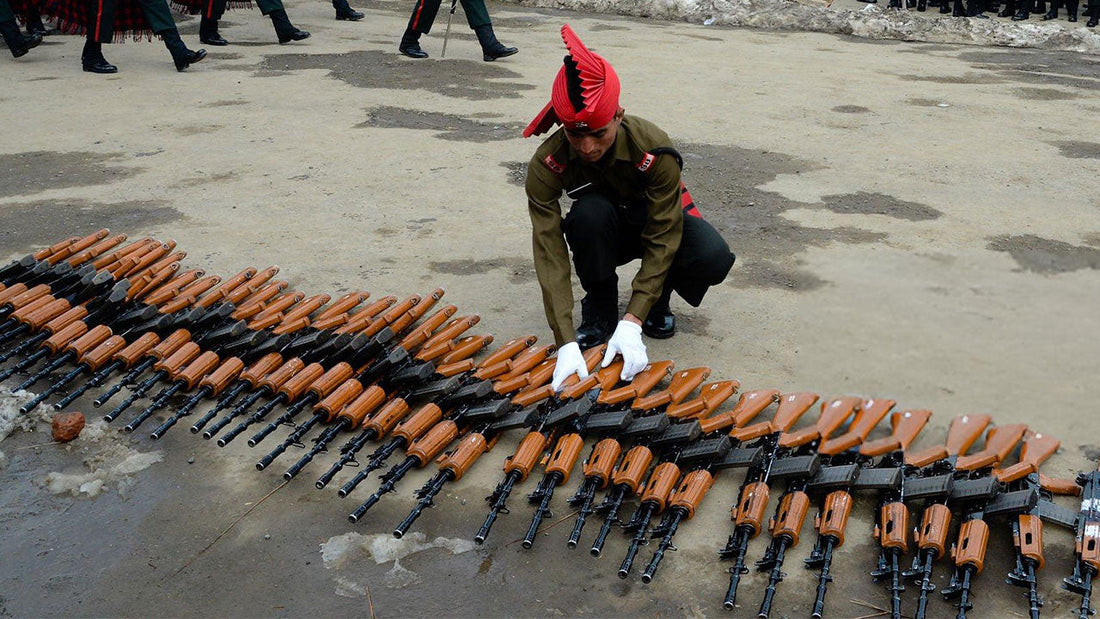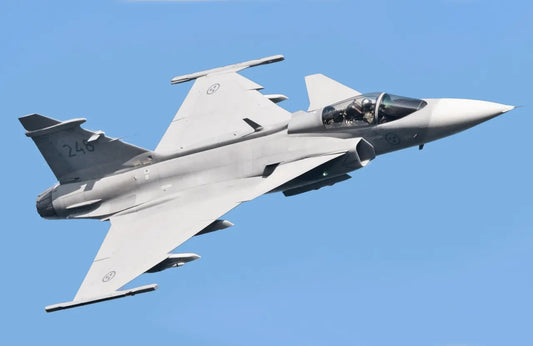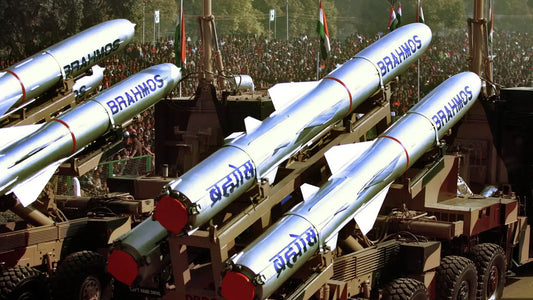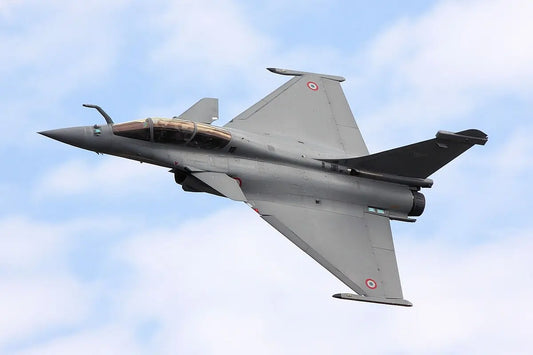5 Reasons Why INSAS is Still Used by the Indian Army

The Indian Small Arms System (INSAS) rifle has been a cornerstone of the Indian Army's arsenal since its induction in the late 1990s. Designed by the Armament Research and Development Establishment (ARDE) and manufactured by the Ordnance Factories Board, the INSAS was intended to replace the outdated L1A1 self-loading rifles with a modern 5.56×45mm NATO caliber weapon.
Despite its widespread use, the INSAS has faced significant criticism for reliability issues, including jamming, magazine cracking, and poor performance in extreme conditions like the Kargil conflict of 1999 and prolonged battles, as noted by the Royal Nepalese Army in 2005. Yet, the Indian Army continues to rely on this rifle. Below are five key reasons why the INSAS remains in service, supported by detailed analysis and evidence.
1. Extensive Inventory and Gradual Replacement Process
The Indian Army possesses an estimated 760,000 to one million INSAS rifles, forming the backbone of its small arms inventory, which totals approximately 810,000 assault rifles across the three services. Replacing such a vast number of rifles is a logistical and financial challenge that cannot be accomplished overnight. The transition to newer systems, such as the AK-203 and SIG Sauer 716, is underway, with contracts for 72,000 SIG Sauer rifles signed in 2019 as a stop-gap measure and plans for AK-203 production in collaboration with Russia. However, delays in these procurement processes, including stalled negotiations and production timelines, have necessitated the continued use of INSAS. The sheer scale of the inventory requires a phased approach to ensure operational continuity, as replacing all rifles simultaneously could leave the army under-equipped.
2. Delays in Procurement of Modern Rifles
The Indian Army's efforts to replace the INSAS have been plagued by bureaucratic and technical challenges. In 2011, a tender was issued for multi-caliber assault rifles capable of switching between 5.56mm and 7.62mm rounds to meet diverse operational needs, such as conventional warfare and counter-insurgency. However, this "overambitious experiment" failed, as no rifle met the army's stringent requirements, leading to the tender's cancellation in 2015. Subsequent attempts to develop indigenous alternatives, such as the DRDO's Excalibur and a rifle from the Ishapore Rifle Factory, were rejected in 2017 for failing to meet performance standards during firing tests. Reports from 2016 about procuring 185,000 modern rifles did not materialize into issued tenders, further extending INSAS's service life. These procurement delays have left the army with no immediate alternative, forcing reliance on the INSAS.
3. Utility in Specific Operational Roles
Despite its shortcomings, the INSAS continues to serve in specialized roles within the Indian Army. The INSAS family includes variants like the light machine gun (LMG) and marksman rifles, which are adapted for specific tactical purposes. For instance, the INSAS LMG, with its longer and heavier barrel, is used for suppressive fire, while marksman variants provide precision in designated roles. Additionally, paramilitary forces like the Border Security Force (BSF) continue to use INSAS rifles, indicating their utility in non-frontline contexts. Later variants, such as the INSAS 1B1 and 1C1, have addressed some reliability issues, making them viable for these niche applications.
4. Financial and Budgetary Constraints
The cost of developing, procuring, and deploying new rifle systems is substantial, and the Indian Army must balance its budget across various defense priorities, including artillery, tanks, and advanced weaponry. The high financial burden of replacing nearly one million INSAS rifles has slowed the transition process. For example, the contract for 72,000 SIG Sauer 716 rifles was a significant investment, and scaling this to replace the entire inventory would require substantial funding. Additionally, indigenous production of new rifles, such as the AK-203 through a joint venture with Russia, involves setting up manufacturing facilities, further adding to costs. Until more cost-effective or fully indigenous solutions are available, the INSAS remains a practical choice due to its existing infrastructure and lower immediate financial impact.
5. Logistical and Training Considerations
Transitioning to a new rifle system involves more than just procurement; it requires extensive retraining of soldiers and adjustments in logistics for ammunition, spare parts, and maintenance. The Indian Army, with over 1.3 million personnel, faces significant challenges in managing such a transition without disrupting operational readiness. The INSAS uses 5.56×45mm NATO ammunition, for which the army has substantial stockpiles and established supply chains. Switching to a new caliber, such as the 7.62×51mm used by the SIG Sauer 716, requires reconfiguring these logistics. Moreover, soldiers trained on INSAS would need to adapt to new weapon systems, which could take months or years to implement across the entire force. The gradual approach to this transition ensures that the army maintains its combat effectiveness while phasing out INSAS.
Addressing Criticisms and Context
The INSAS rifle has faced significant criticism, particularly during the 1999 Kargil conflict, where issues like magazine cracking, jamming, and unintended automatic firing were reported. A 2005 incident highlighted by the Royal Nepalese Army further underscored its limitations, noting that the rifle overheated and malfunctioned during prolonged battles. An audit from 2015-2020 revealed a 13-17% defect return rate due to metallurgical issues, such as faulty breech blocks and cartridge cases. Despite these problems, the army's shift in preference to 7.62mm caliber weapons since 2015-16, citing greater lethality, has not fully eliminated the need for INSAS, especially in roles where 5.56mm is still suitable. The continued use by paramilitary and state police forces also reflects its entrenched role in India's security apparatus.
Recent Developments and Future Outlook
Recent efforts to modernize the INSAS include upgrade kits proposed by companies like Star Aerospace, which offer new magazines, folding stocks, and Picatinny rails to enhance functionality. However, the army's confidence in INSAS has waned, as noted in online discussions, leading to a focus on newer systems. The introduction of 72,000 SIG Sauer 716 rifles and plans for AK-203 production indicate a clear intent to phase out INSAS, but the process is expected to take years due to the scale of replacement and ongoing challenges in indigenous rifle development. The army's rejection of the Excalibur and other prototypes underscores the difficulty in creating a reliable, world-class indigenous rifle, further prolonging INSAS's service life.
Conclusion
The INSAS rifle's continued use by the Indian Army is a result of practical necessities and systemic challenges. Its massive inventory, delays in procuring modern alternatives, utility in specific roles, financial constraints, and logistical complexities all contribute to its persistence. While the rifle has been criticized for reliability issues, its role in the Indian Army's arsenal remains significant, particularly in non-frontline and specialized applications. As the army moves toward modernizing its small arms with rifles like the AK-203 and SIG Sauer 716, the INSAS is gradually being phased out, but its complete replacement will take time due to the scale and complexity of the transition.
| Reason | Details |
|---|---|
| Extensive Inventory and Gradual Replacement | Nearly one million INSAS rifles in use; replacement with AK-203 and SIG Sauer 716 is ongoing but delayed. |
| Delays in Procurement | 2011 tender for multi-caliber rifles failed; indigenous Excalibur and Ishapore rifles rejected in 2017. |
| Utility in Specific Roles | Used as LMG and marksman rifles; also by BSF and state police. |
| Financial Constraints | High cost of replacing entire inventory; budget prioritization slows transition. |
| Logistical and Training Considerations | Requires retraining and new supply chains for different calibers. |




















3 comments
INSAS must be removed from Indian Army arsenal asap.
Very comprehensive article, worth reading.
Very comprehensive article, worth reading.